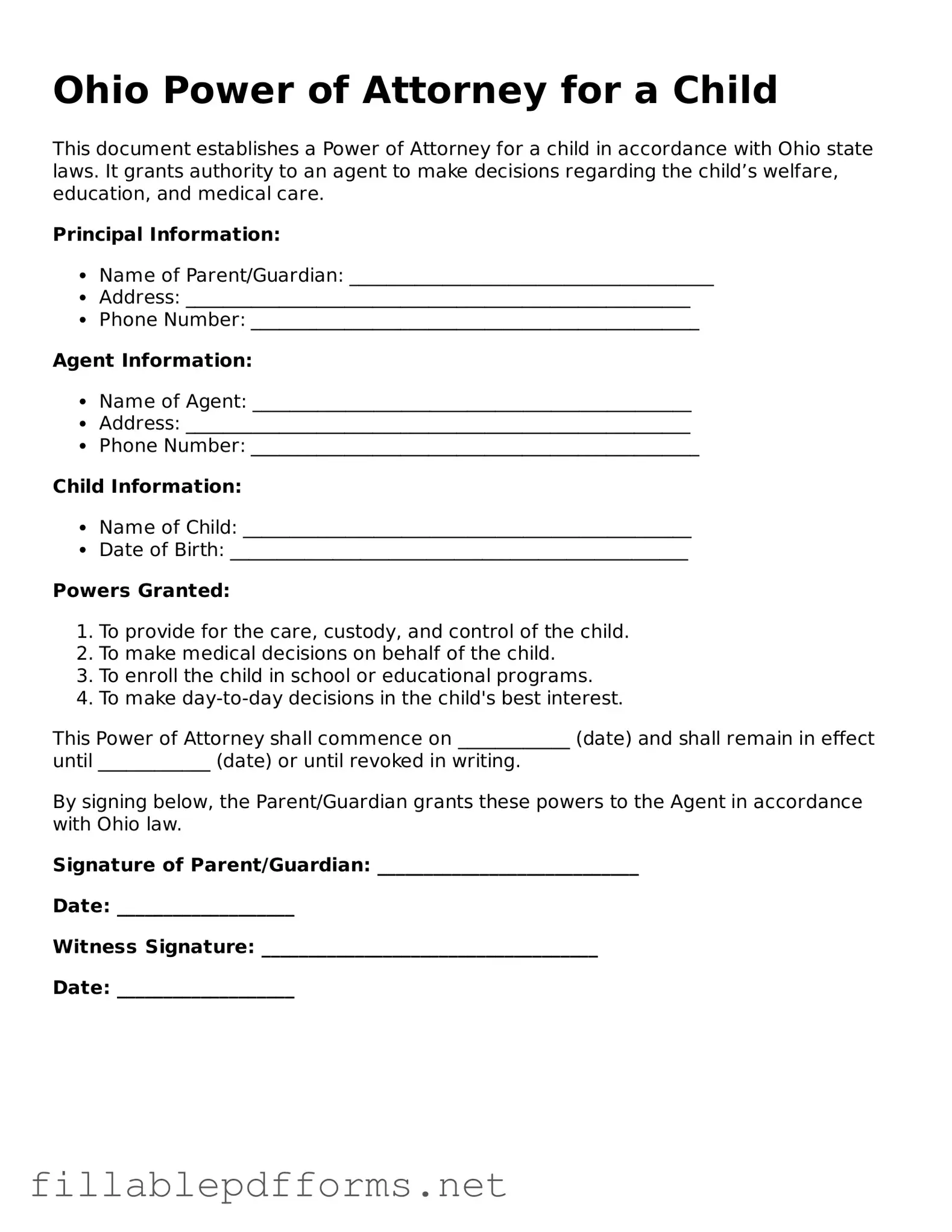Attorney-Verified Power of Attorney for a Child Form for Ohio State
The Ohio Power of Attorney for a Child form is a legal document that allows a parent or guardian to designate another individual to make decisions on behalf of their child. This form is particularly useful in situations where the parent is temporarily unable to care for their child, such as during travel or medical emergencies. By granting this authority, parents can ensure that their child's needs are met and that important decisions can be made promptly.
Launch Editor Here
